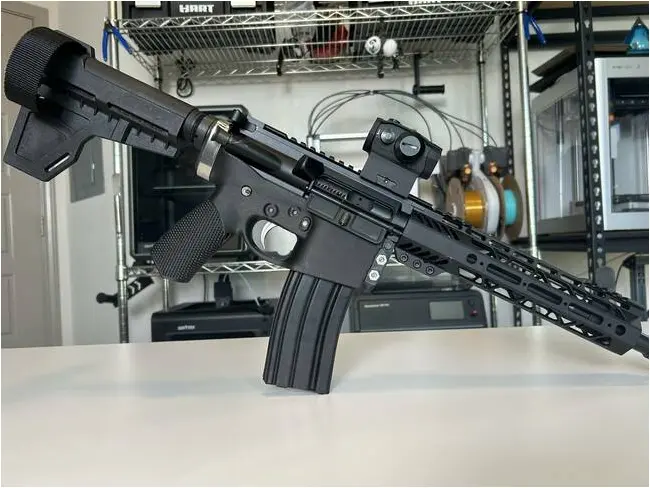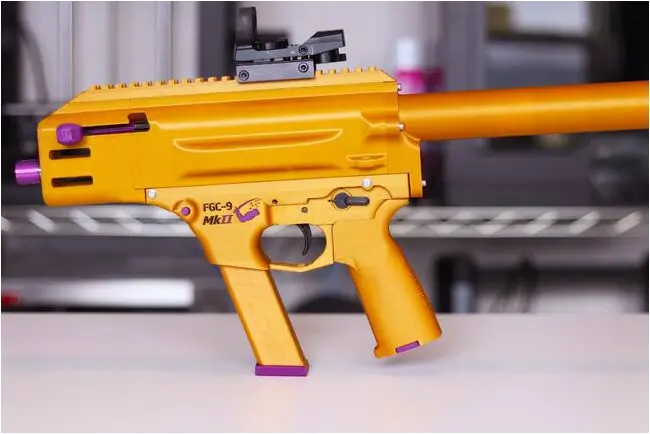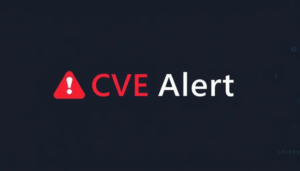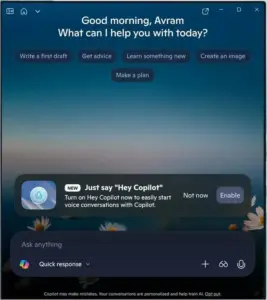Leading 3d Printing Site Bans Firearm Files, But Home Gun Makers Have Betteroptions
Updated A leading 3D printing site has agreed to purge its library of downloadable gun designs at the urging of Manhattan District Attorney Alvin Bragg. However, it’s unlikely to slow the proliferation of 3D printed weapons, as many other sites offer downloadable gun designs and parts.
Earlier this year, Bragg wrote to 3D printing companies, asking them to ensure their services can’t be used to create firearms. On Saturday, Bragg announced that one such company, Thingiverse, would remove working gun models from its site. The company operates a popular free library of 3D design files and had already banned weapons in its terms of use, but is now promising to improve its moderation procedures and technology.
“At Thingiverse, safety and creativity go hand in hand,” Thingiverse VP Rob Veldkamp said in a statement we received from a spokesperson following initial publication of this article. “We’re reinforcing our long-standing ban on sharing designs for functional firearms, critical gun parts, or accessories that boost lethality while keeping cosplay props, airsoft models, and toy replicas welcome.”
Thingiverse confirmed to The Register that, following its agreement with Bragg, it has added AI automation to its moderation process in the hopes of catching more weapon file uploads. However, the company also said that human moderators would have the final call on any takedowns.
“Ghost guns”
Law enforcement authorities describe 3D-printed guns and other homemade firearms as “ghost guns” because they lack a serial number and are therefore effectively untraceable. US authorities have tried to stop their proliferation for years.
According to the US Bureau of Alcohol, Tobacco, Firearms and Explosives (ATF), between 2017 and 2021, law enforcement agencies submitted 37,980 [PDF] guns to the federal agency for tracing. Everytown for Gun Safety, a gun safety advocacy group, keeps a list of shootings carried out with ghost guns dating back to 2013 – at the time of writing it lists 208 incidents.
Luigi Mangione, who is accused of killing UnitedHealthcare CEO Brian Thompson, reportedly used a 3D printed gun.
In March, Bragg also wrote to 3D printer manufacturer Creality and asked it to ensure its products could detect designs for guns and refuse to produce them.
According to his office, the DA is still in talks with the vendor and hopes to secure its cooperation, but has no agreement to announce. We asked Creality for comment, but haven’t heard back. The prosecutor has also worked with YouTube to limit 3D gun videos from its platform.
Additionally, Bragg has called for new laws that would make it a class D felony to 3D print guns and a class A misdemeanor to distribute gun design files. Back in 2023, a New York state senator, Jenifer Rajkumar, introduced a bill which would have required a background check for every 3D printer sold in the state. However, that proposal never made it out of committee.
It’s unclear whether a law banning the availability of 3D printed gun files would violate the First Amendment. In March, the Supreme Court ruled [PDF] that the ATF can regulate ghost guns. However, it didn’t have anything specific to say about 3D design files.
Recoiling from controversy
At any rate, while Thingiverse may be popular among 3D printing mavens, people who like to build their own guns look to other options.
“You should only download gun files from reputable sources that have tested the files and that include build instructions,” Sean Aranda, a 3D printed gun hobbyist who makes videos online as the 3D Print General, told The Register. “Someone uploading a gun design on Thingiverse is likely to have stolen the design from the original designer, not included proper build instructions, or are uploading an untested design. This hobby is not dangerous so long as proper precautions are taken, and a random upload on Thingiverse does not follow those precautions.”
Aranda explained that, in the US, only the lower part of the gun known as the “receiver” is regulated and requires a background check to purchase. Mass-manufactured receivers come with serial numbers that make them traceable. However, many 3D printed designs allow home users to print their own receivers, allowing them to print or purchase the rest of the parts without facing government scrutiny.
“In the 3D printed gun community, the most commonly 3D printed gun would be when you only print the serialized portion, and then purchase the rest of the firearm components,” Aranda said.
As Aranda explains in a 2023 video, firearm aficionados can make guns that are either wholly 3D printed, are partially 3D printed and require a kit of metal parts to complete, or are mostly 3D printed and use metal parts that an industrious person could create at home. Gun part design download sites like The Gatalog claim to rigorously beta test all the files it hosts and make sure that they are not only effective, but safe to use. Some online stores such as Palmetto State Armory sell gun parts, while others such as Hoffman Tactical provide both designs and metal kits.
Aranda shared a photo of an AR-15 he built using Hoffman Tactical design files for the lower part, along with parts he purchased from the company.
Users don’t necessarily need to purchase a kit. A completely plastic gun such as the Liberator, the first well-known 3D printed firearm which emerged in 2013, can explode in the user’s hand. Others, such as 2020’s FGC-9, use metal parts that you can shape at home in concert with 3D printed pieces.
Bragg’s approach to 3D printing sites and 3D printer manufacturers is to seek voluntary cooperation. Only Thingiverse and YouTube have taken up his call, others may or may not follow. We asked Prusa, which runs Printables, another popular download site, for comment but it did not answer by publication time.
“While law enforcement has a primary role to play in stopping the rise of 3D-printed weapons, this technology is rapidly changing and evolving, and we need the help and expertise of the private sector to aid our efforts,” Bragg said. “We will continue to proactively reach out to and collaborate with others in the industry to reduce gun violence throughout Manhattan and keep everyone safe.”
But it seems doubtful that the sites where Aranda and other 3D gun makers get their files will be rushing to help Bragg voluntarily. ®
A considerable amount of time and effort goes into maintaining this website, creating backend automation and creating new features and content for you to make actionable intelligence decisions. Everyone that supports the site helps enable new functionality.
If you like the site, please support us on “Patreon” or “Buy Me A Coffee” using the buttons below
To keep up to date follow us on the below channels.




![[HANDALA] - Ransomware Victim: Commemoration of Commander Martyr Reza Awada 2 image](https://www.redpacketsecurity.com/wp-content/uploads/2024/09/image-300x300.png)

